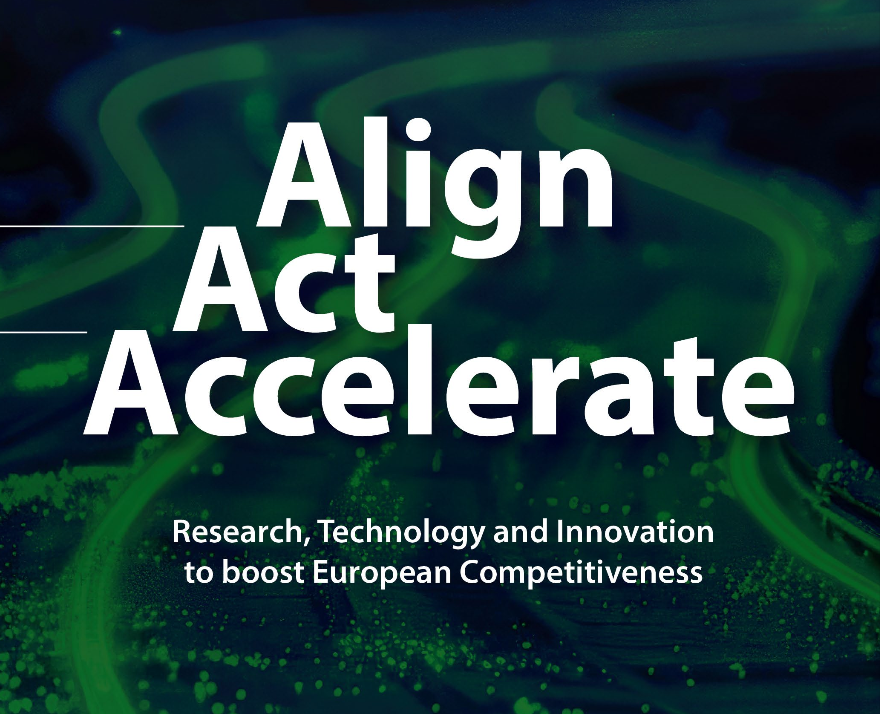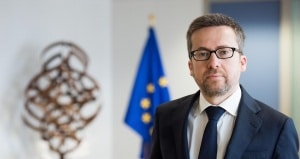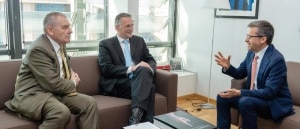Recommendation of the DG RTD to the European Commission for the end of Horizon Europe and for FP10
Here you can find full report.
Objective and Vision
The report underscores the interconnectedness of societal, financial, and geopolitical dimensions in shaping Europe’s research and innovation landscape. By addressing societal challenges, reforming funding mechanisms, and responding strategically to geopolitical shifts, Europe can position itself as a global leader in sustainable and inclusive innovation.
The Directorate-General for Research and Innovation of the Commission appointed an independent high-level expert group to deliver specific recommendations for the future FP10. Drawing on extensive stakeholder consultations and robust evidence, their work examines the programme’s effectiveness, efficiency, relevance, coherence, and European added value. This report, the culmination of a year-long effort by the experts, offers 12 recommendations to improve the remaining years of Horizon Europe and to inform future European research and innovation investments.
You will find below a summary of the 12 recommendations promoted in the report.
12 Strategic Recommendations
- Whole-of-Government Approach:
Three strategic reports, “Much more than a market” (the so-called Letta Report), the “Europe’s Choice: Political guidelines for the next European Commission 2024-2029”, and “The future of European competitiveness” (the so-called Draghi Report) confirm that RD&I is a systemic issue.
Horizon Europe and its successor FP10 should embrace the following context:
-
- Ensure “political ownership” of RD&I by the future new College of European Commissioners and establish the Research and Innovation Union (Draghi Report);
- Put research and innovation at the heart of our economy;
- Pursue a coordinated and comprehensive European technology policy;
- Increase R&D expenditure;
- Strengthen Research institutions and Universities;
- Make better use of public procurement for innovation;
- Improve governance of European research and innovation;
- Invest massively in sustainable competitiveness.
- Make Europe globally competitive, secure, sustainable and resilient:
The EU’s share of total publications declined. China leads in applied sciences, enabling and strategic technologies, engineering, ICT, natural sciences (particularly chemistry); the USA leads in biomedical & clinical medicine; the EU leads in historical studies. Europe is also failing to file and be granted important patents in key emerging and enabling technologies.
The recommendations are to:
- Increase national expenditure on RD&I and co-ordinate with EU policy through the European Semester process;
- Incentivise increases in national RD&I investments (to 3% of GDP);
- Fund the full spectrum of RD&I and catalyse private investment;
- Ensure that FP10 is a high return investment in Europe’s future;
- Launch a technology monitoring initiative and ensure that it provides regular inputs to relevant Horizon programmes, councils, agencies, as well as a broader public.
- Creation of four “spheres” of action:
It is necessary to create four “spheres” of action
- Competitive excellence;
- Industrial competitiveness;
- Societal challenges and
- A strong research and innovation ecosystem.
The DG RTD recommends to:
- Advocate for an increased budget of €220 billion for the next research framework (FP10);
- Closure of the of the European Institute of Technology – EIT;
- Initially agreed budget is ring fenced to prevent it from being cut in future years;
- Increase the numbers of high-quality proposals receiving the European Seal of Excellence;
- FP10 allows Europe to take the lead in International collaboration.
- Establish an experimental unit capable of understanding the AI application
Europe also urgently needs to foster disruptive, breakthrough and transformative scientific advances and innovation to catalyse paradigm shifts.
It is then necessary to:
- Create a unit with maximum flexibility and significant budget;
- Develop an internal closed data base and GenAI system;
- Investigate how GenAI systems can be used quickly and reliably to automate routine procedures and so increase productivity and efficiency for applicants test new programmes;
- Appropriate guidance to both applicants and reviewers on the use of GenAI.
- Strengthen competitive excellence:
The European Commission shall focus and strengthen the working instruments. Therefore, the recommendations are to:
- Preserve and reinforce the structure and governance of the ERC, EIC and MSCA;
- Increase the budget of the ERC, EIC and MSCA and encourage Member States to fund all Seals of Excellence with national funds and European structural funds;
- Address the unacceptable low success rate of EIC by increasing the budget;
- Introduce the EIC Pre-Accelerator programme;
- Further improve synergies between ERC, EIC and the two Councils;
- Launch initiatives like “Choose Europe” to attract and retain researchers, and expand programs like the European Research Council (ERC) and Innovation Council (EIC).
To retain and attract outstanding young researchers in Europe, the DG RTD proposes to:
- Establish a new “Choose Europe” initiative, under the MSCA programme, to foster careers of young researchers throughout Europe;
- Expand the MSCA Industry programmes.
The huge demand and inadequate budget of EIC has resulted in the lowest success rates in Horizon Europe (8%) and the award of 841 seals of excellence to high quality innovative companies evaluated as worthy of funding but for which there was no money available. It is recommended to:
- Attract private investors to the EIC Fund;
- Allocate a 10-year fund of EUR 30 billion;
- EIC blended finance offering of grant plus equity must be maintained;
- Invest at a wide range of ticket sizes up to EUR 100 million.
- Creating the European Technology and Industrial Competitiveness Council (ETIC2):
There is a need to improve the strategic orientation of the FP to prioritize industrial competitiveness in what is currently pillar 2 of Horizon Europe.
This is more a question of modification, administrative simplification and adequate public resources to attract companies to invest and co-invest in long-term.
Inspired by and mirroring the successes of the ERC Scientific Council and the EIC Board, the European Technology and Industrial Competitiveness Council (ETIC2) should become a trusted and recognized authority.
The functions of the Council should include:
- Ensuring relevance through guidance and advice on strategy;
- Strengthening coherence by exchanging and coordinating with the ERC Scientific Council, the European Strategic Forum on Research Infrastructures and the Board of the EIC and with RD&I flagship projects led by other DGs, and by providing guidance on Technology Infrastructures;
- Improving implementation (e.g., through commissioning evaluations, ensuring appropriate programme and project portfolios, monitoring administrative efficiency and effectiveness;).
Concerning the partnerships in FP10, The DG RTD recommends the following:
- A stronger focus on EU industrial competitiveness, for a more focused and stronger impact of joint public & private RD&I investments;
- Increase flexibility in implementation, transnational (and international) cooperation and reinforce the instrument’s strategic role for policy implementation;
- Better align EU and national funding.
- Creating a “European Societal Challenges Council” (ESC2)
The framework programme needs to address societal challenges for the sake of the legitimacy of science and for the future of a strong and sustainable Europe and should focus on “secure and thriving citizens”.
Societal challenges should be addressed through a systemic approach that combines both “bottom-up” and “topdown” approaches.
It is proposed to create a “European Societal Challenges Council” (ESC2) which:
-
- Is tasked with identifying priorities aligned with the European Strategic Agenda;
- Involves practitioners, civil society, and philanthropy to address underfunded areas like biodiversity and mental health.
- Increases funding for missions with direct societal impacts, e.g., climate adaptation, food security, and public health innovations;
- Integrates societal metrics into project evaluations to ensure research outcomes address real-world needs.
- Foster an attractive and inclusive RD&I ecosystem: attract and retain researchers
Europe needs to turn the current European brain drain (mostly to the USA) into a brain gain.
Additionally, a clear definition of diversified programmes to co-fund and promote Research Infrastructures and Technology Infrastructures is missing and RI needs to be widened and diversified to properly address Technology Infrastructures (TI).
Last but not least, there is a need to harmonize the two current different processes for defining and further promoting European Research Infrastructures: i) ESFRI and ii) RI Programmes in HE INFRA-Calls.
Therefore, the DG RTD recommends to:
- Promote synergies between the FP and European structural funds;
- Develop a pan-EU strategy for Technology Infrastructures (TI) and modernize the Research Infrastructures (RI) policy with ESFRI;
- Strengthen university alliances across Europe;
- Concentrate current “supporting” schemes under Horizon Europe – especially for Widening Countries – towards an effective concept of “Advancing Europe”;
- Promote efficient and collaborative funding between the FP and national/regional/structural funds through the effective funding of “Seals of Excellence”.
- Radical simplification
Currently, the administrative burden, undermine the efficiency of the FP. A second problem area concerns the efficiency of the application selection and project implementation process. A third area concerns the onerous reporting requirements and high administrative costs.
The idea would be to:
- Modernize Assessment, strengthening independent peer review to consider the research environment and institutional support;
- Thoroughly assess “Simplified Cost Options”, namely “Lump Sum financing” and optional “Unit Costs for Personnel”, or the mandatory use of unit costs for personnel;
- Decrease administrative burden to account for the “in-kind”/cash contributions. Consider “In-kind” as a financial contribution (e.g., the cost of people’s working time, the use of equipment, and the own funding), as industry is not funded at full costs.
- Foster the use of Artificial Intelligence.
Regarding the current structure of Horizon Europe:
- Clusters should evolve to consider synergies and efficiency among the four main Councils to be considered after 2025 (i.e., ERC, EIC, ETiC2 and ESC2);
- Partnerships should leverage cash and in-kind contributions from industry;
- Missions, as currently existing (i.e., Cancer, Sustainable Cities, Soil Quality, Ocean/Water Sustainability and Climate Change), should be taken out of the FP on RD&I and be governed at an adequate top level of “political ownership” by the future new College of European Commissioners.
Recommendations for HE (2025-2027) and enlarged in FP10 should consider:
- Eliminating non-core, redundant and underperforming programmes:
- the European Institute for Innovation and Technology (EIT);
- The European Innovation Ecosystems Programme (EIE) might be redundant;
- Widening instruments should be concentrated and simplified;
- Overall, the elimination of non-core, redundant and underperforming programmes should occur throughout the current HE programme.
- Accepts responsible risk in return for reduced administrative burden and transaction costs:
- Application system to “trust first/evaluate later” and become more applicant-friendly, Commission-efficient, impact-oriented and ensure a reduced time to fund;
- Simplification for beneficiaries;
- Engaging practitioners in the governance of the programme through the proposed two new Councils in this report, the European Technology and Industrial Competitiveness Council (ETIC2; Recommendation and the European Societal Challenges Council.
- Developing an innovation procurement programme
It would be necessary to develop and implement a strategy or programme for innovation procurement. An example of innovation procurement may be the EC soliciting a tender decarbonise critical infrastructures (e.g., airports, railways, ports), rather than procuring a specific technical solution (such as carbon capture, or alternative fuels)
The recommendation are to:
- Initiate capacity-building and training of staff in charge of public procurement at DG RTD (i.e., starting in 2025);
- Allow the EC to move from pre-commercial public procurement to public procurement;
- Develop and test possible initiatives in and with the experimental unit;
- Identify and address obstacles to public procurement for innovation;
- Improve synergies and coherence across EU policy domains to better utilize public procurement;
- Ensure that public procurement does not distort competition;
- Engage practitioners and other experts by involving ERC, EIC and the councils for industrial and technology competitiveness and societal challenges in designing PPI initiatives;
- Leverage the experience of European “New Own Resources”, such as the Emissions Trade System – ETS and the related Innovation Fund (managed by DG CLIMA), as well as the Next Generation EU Programme (managed by the Recovery and Resilience Facility – RRF and National Recovery and Resilience Plans – RRPs).
- Adopt a purpose-driven approach to international cooperation
Call for a proactive, strategic approach to international cooperation, which effectively combines offensive with defensive instruments:
- Protection: restricting technology flows and reducing dependency risks, e.g., through regulatory policies like export controls, supply-chain diversification measures, etc.;
- Promotion: enhancing domestic innovation capabilities and performance, e.g., through holistic innovation policies, mission-oriented innovation policies, national industrial strategies, etc.;
- Projection: extending and deepening international STI linkages, e.g., through international technology alliances, active participation in international standards setting bodies
Solution:
- Invest in and pool knowledge resources to understand a changing geopolitical environment;
- Establish a system for technology monitoring;
- Strengthen cooperation outside the EU;
- Devise and fund a strategy to advance the EU as a setter of global standards;
- Strengthen the EU’s position as a global leader to tackle global challenges (green transition).
- Embrace the fact that dual use occurs naturally given the ubiquitous nature of modern technology
The EC launched a wide public consultation. Respondents were invited to share their views on three options: 1) going further based on the current set-up, 2) remove the exclusive focus on civil applications in selected parts of future Framework Programme and 3) create a dedicated instrument with a specific focus on research and development with a dual-use potential.
The analysis indicates a tendency mostly favorable to
Option 1 among research institutions, NGOs and expressed citizens, and more openness to
Option 2 among some public authorities, business associations and private companies.
The main recommendation for Horizon Europe, 2025-2027 and its successor FP10 is to embrace that dual use is inevitable given due to the nature of modern technology (e.g., internet, drones) and the broad needs of a modern military (e.g., health, fitness).
The EC should administer programmes as “military RD&I” and “everything else“ and optimise the innovation dividend arising from the need for increased national security and defence expenditure.
Here you can find full report.




